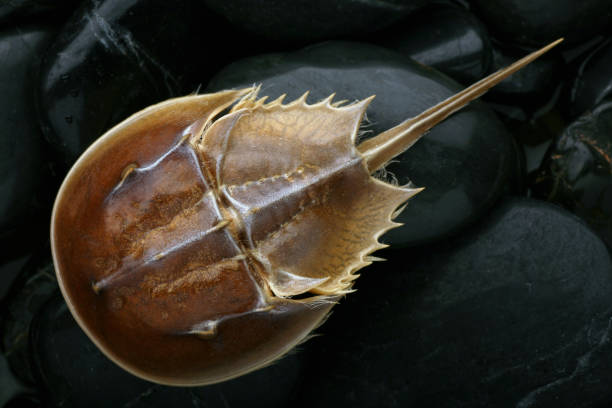Horseshoe Crabs: Living Fossils and Medical Marvels
Horseshoe crabs, ancient creatures that have survived for over 450 million years, are not only fascinating relics of Earth's prehistoric past but also critical contributors to modern medicine. These unique arthropods, more closely related to spiders and scorpions than true crabs, have become an unlikely hero in the world of medical research and pharmaceutical development. Their blue blood, a rare and valuable resource, plays a crucial role in ensuring the safety of vaccines and medical devices worldwide.

The Ancient Lineage of Horseshoe Crabs
Horseshoe crabs have a fossil record dating back to the Ordovician period, approximately 450 million years ago. This remarkable longevity has earned them the moniker living fossils, as they have survived multiple mass extinction events that wiped out countless other species. Their resilience and adaptability have allowed them to thrive in various marine environments, from shallow coastal areas to deeper ocean waters.
Despite their name, horseshoe crabs are not true crabs but belong to the subphylum Chelicerata, which includes arachnids and sea spiders. Their distinctive horseshoe-shaped carapace and long, spike-like tail (telson) make them easily recognizable. Four extant species exist today, with the Atlantic horseshoe crab (Limulus polyphemus) being the most well-known and studied.
Blue Blood: A Medical Marvel
The most extraordinary feature of horseshoe crabs is their blue blood, which contains copper-based hemocyanin instead of iron-based hemoglobin found in vertebrates. This unique blood composition gives it its striking blue color and remarkable properties that have made it indispensable in the medical field.
The blood of horseshoe crabs contains amebocytes, cells that play a crucial role in their immune system. These cells react to the presence of bacterial endotoxins by coagulating, effectively trapping and neutralizing harmful bacteria. Scientists have harnessed this property to develop the Limulus Amebocyte Lysate (LAL) test, a highly sensitive method for detecting bacterial contamination in medical products.
The LAL Ensuring Medical Safety
The LAL test has become the gold standard for screening injectable drugs, vaccines, and medical devices for bacterial contamination. This test is so sensitive that it can detect endotoxins at concentrations as low as one part per trillion, making it far more effective than previous methods.
The importance of the LAL test in modern medicine cannot be overstated. It is used to test every batch of injectable pharmaceuticals, implantable medical devices, and even equipment used in space exploration to ensure they are free from bacterial contamination. This critical role in safeguarding public health has created a significant demand for horseshoe crab blood, with the LAL market estimated to be worth hundreds of millions of dollars annually.
Conservation Challenges and Ethical Concerns
The high demand for horseshoe crab blood has raised concerns about the impact on wild populations. While the blood harvesting process is designed to be non-lethal, with crabs returned to the ocean after extraction, mortality rates and long-term effects on their reproductive capabilities remain subjects of ongoing research and debate.
Conservation efforts have been implemented in various regions to protect horseshoe crab populations. These include harvest restrictions, habitat protection, and the establishment of sanctuaries. Additionally, there is growing interest in developing synthetic alternatives to horseshoe crab blood to reduce the reliance on wild populations.
Ecological Importance of Horseshoe Crabs
Beyond their medical significance, horseshoe crabs play a vital role in coastal ecosystems. Their eggs provide a crucial food source for migratory shorebirds, particularly the endangered red knot, which times its annual migration to coincide with horseshoe crab spawning events.
Horseshoe crabs also contribute to the health of marine environments through their feeding habits. As they forage for food in the sediment, they help aerate the ocean floor and redistribute nutrients, benefiting other marine organisms.
Future Outlook and Research Directions
As awareness of the horseshoe crab’s importance grows, so does the effort to ensure their survival and sustainable use. Researchers are exploring ways to reduce the number of crabs needed for blood extraction, improve survival rates after bleeding, and develop synthetic alternatives that could potentially replace the need for crab blood in medical testing.
The study of horseshoe crabs continues to yield new insights into evolutionary biology, ecology, and medical science. Their unique immune system and longevity make them valuable subjects for research into cancer resistance and the aging process.
In conclusion, horseshoe crabs represent a fascinating intersection of ancient evolutionary history and cutting-edge medical science. Their continued existence is not only a testament to the resilience of life on Earth but also a critical component of modern healthcare. As we move forward, balancing the medical needs of humanity with the conservation of these remarkable creatures will be essential to ensure their survival for millions of years to come.





